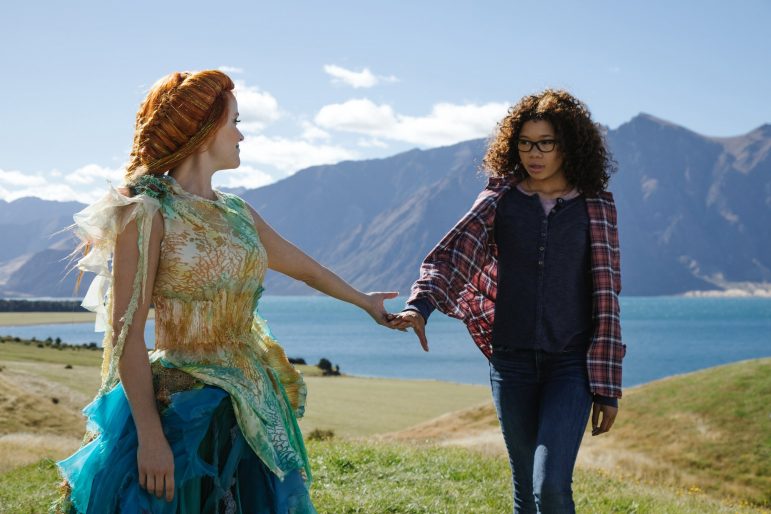

First of all, an attempt to adapt such an unadaptable novel, with its Cold War and Christian overtones, into a film in this day and age is a difficult endeavor itself. Director Ava DuVernay deserves commendation for her efforts, just as Disney does for spending $100 million on such a risky idea, making “A Wrinkle in Time” the most expensive movie ever directed by a woman of color. Now, as much as I approve of the cultural and societal significance behind the idea of this piece, the actualization is lacking, and what we are left with is a middle of the road children’s film, a disappointment in the face of such beloved and complex source material.
The plot of “A Wrinkle in Time” can be best summarized as such: a scientist, played by Chris Pine, with bizarre theories on the nature of the universe disappears and his two children, Meg and George, played by Storm Reid and Deric McCabe, and Meg’s quasi-boyfriend Calvin, played by Levi Miller, explore the cosmos in search of him, aided by three luminous beings played by Oprah Winfrey, Reese Witherspoon, and Mindy Kaling, who eventually rope them into a conflict of dark and light, good and evil.
The acting in “A Wrinkle in Time” is across the board. As much as Oprah has been hyped up in the marketing of this movie, its lead stars are Reid, Miller and McCabe. Surprisingly, all three of the child actors are successful enough. They will not win any Oscars, but they certainly did not ruin the movie. McCabe occasionally struggles with the nuanced aspects of his admittedly difficult role, but remains consistently entertaining, even if it is sometimes for the wrong reasons. Chris Pine is surprisingly compelling as a loving, guilty father, and his performance is integral to the emotional motivation of the character. However, the film should have made more use of him. Winfrey, Witherspoon and Kaling are an interesting case study because while none of them are terrible, they aren’t really acting or making these characters their own: Oprah plays Oprah, Witherspoon plays Witherspoon.
The actualization is lacking, and what we are left with is a middle of the road children’s film, a disappointment in the face of such beloved and complex source material.
Previously, I alluded to the fact that “A Wrinkle in Time” is a difficult novel to adapt into film. Its themes, a combination of reaffirming New Testament values and warning against the dangers of authoritarianism in the form of communism, are certainly of its times, and have been tempered down into a more standard, digestible message of self acceptance, a change that comes at the expense of many of the more interesting, Orwellian set pieces of the book. The more abstract metaphysics have been cut out entirely, as well as several characters, obviously to make it more marketable to children.
The book, for all its troublesome aspects, lends itself very well to a surrealist interpretation, one that the film only dables in. While its visual effects are at points impressive and immersive, the film’s overall aesthetic was hindered by its inability to push the limits and really embrace the more creative aspects of the book.
Ultimately, what truly damns “A Wrinkle in Time” to mediocrity is its lamentable pacing. The first act is extremely bloated, meandering along without a real sense of purpose or logical progression. Events are hardly the results of the main characters’ actions, but rather happenings that occur out of their control. Having your main characters just go along with the flow is hardly compelling writing. Another problem plaguing the first act is a tendency to overindulge in exposition, re-explaining things that any audience member would have already grasped. While this might be due to it being a children’s film, it still negatively affects the pace and momentum of the film. When the second act finally begins, over halfway through the movie no less, it is as if a switch has been flipped: characters have agency and make choices that affect the plot, almost as if it is a movie written by professional writers. The final third of the movie is the most compelling part, yet still suffers from all the time that the first act took up, ending truncated, with a sense of, “That’s it?”
As ranty as that last paragraph became, I want to clarify that “A Wrinkle in Time” is by any means a bad movie. It is a competently made, feel-good Disney excursion, and its gravest sin is wasted potential.



